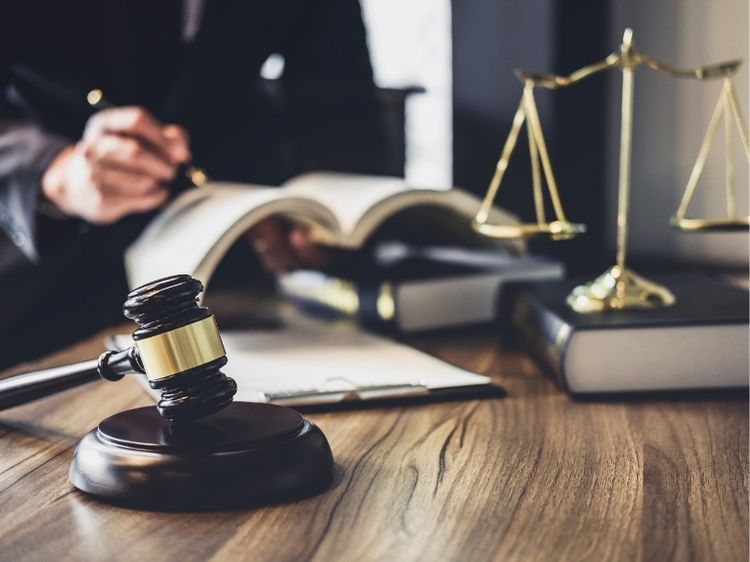Product Liability vs. Strict Liability: A Comprehensive Guide
In today’s complex legal landscape, understanding the nuances between product liability and strict liability is crucial. Whether you’re a business owner, a consumer, or just someone curious about legal terms, this article will break down these concepts in an easy-to-understand manner. We’ll dive into the definitions, key differences, and how these liabilities impact both consumers and manufacturers. So, buckle up—this is your crash course on product liability vs. strict liability!
What is Product Liability?
Product liability refers to the legal responsibility a manufacturer, distributor, or seller has for producing or selling a defective product that causes harm to a consumer. This liability can arise from various types of product defects, including design defects, manufacturing defects, and marketing defects (such as inadequate warnings or instructions).
- Design Defects: These occur when a product is inherently dangerous due to its design, even if manufactured perfectly.
- Manufacturing Defects: These defects arise during the production process, making a product different from its intended design and therefore dangerous.
- Marketing Defects: Also known as “failure to warn” defects, these occur when a product lacks sufficient instructions or warnings, leading to consumer misuse.
In product liability cases, the injured party typically must prove that the product was defective and that this defect directly caused their injury. This is where the challenge often lies, as the plaintiff needs to establish a connection between the product defect and the harm suffered.
What is Strict Liability?
Strict liability, on the other hand, is a legal doctrine that holds a party responsible for their actions or products without the need to prove negligence or fault. In the context of product liability, strict liability means that if a product is found to be defective and causes harm, the manufacturer or seller is automatically liable, regardless of whether they exercised care during the production or sale of the product.
This concept simplifies the legal process for consumers, as they do not need to prove that the manufacturer was negligent; they only need to show that the product was defective and caused harm. Strict liability is often applied in cases involving inherently dangerous activities or products, where the risk of harm is significant.
Key Differences Between Product Liability and Strict Liability
Now that we’ve laid the groundwork, let’s explore the key differences between product liability and strict liability.
- Burden of Proof:
- Product Liability: The burden is on the plaintiff to prove that the product was defective and that this defect caused their injury. They must also show that the manufacturer or seller was negligent in some way.
- Strict Liability: The plaintiff only needs to prove that the product was defective and caused harm. There’s no need to establish negligence or fault on the part of the manufacturer or seller.
- Scope of Application:
- Product Liability: This can involve multiple aspects, including negligence, breach of warranty, and misrepresentation. It requires a deeper investigation into the production process and the circumstances surrounding the defect.
- Strict Liability: This is more straightforward and is applied primarily in cases where the product is inherently dangerous. It focuses solely on the defect and the harm caused, without delving into the manufacturer’s conduct.
- Legal Implications:
- Product Liability: Manufacturers and sellers may have more defenses available, such as proving that the product was misused or that the plaintiff was aware of the risks.
- Strict Liability: Defenses are limited, as the focus is purely on the defect and the harm caused. Even if the manufacturer took every precaution, they could still be held liable.
The Role of Negligence in Product Liability
In traditional product liability cases, negligence plays a central role. Negligence refers to the failure to exercise reasonable care in the design, manufacturing, or marketing of a product. If a company is found to have been negligent, they can be held liable for any resulting damages.
- Example: If a car manufacturer designs a vehicle with a faulty brake system and this defect leads to an accident, the manufacturer can be sued for product liability based on negligence. The plaintiff would need to prove that the manufacturer failed to exercise reasonable care in designing or testing the brake system.
The Importance of Warnings and Instructions
One crucial aspect of product liability, especially in the context of marketing defects, is the importance of providing adequate warnings and instructions. If a product has potential risks, manufacturers must clearly communicate these risks to consumers.
- Example: A medication that causes drowsiness must have a clear warning on the label advising users not to operate heavy machinery. Failure to include such a warning could lead to a product liability lawsuit if a consumer is harmed while using the product without adequate knowledge of the risks.
Common Defenses in Product Liability Cases
While product liability cases can be daunting for manufacturers, several defenses can be employed to mitigate liability. Some common defenses include:
- Product Misuse: If the consumer used the product in a way that was not intended or foreseeable, the manufacturer may argue that this misuse caused the injury, not the product defect.
- Assumption of Risk: If the consumer was aware of the potential risks and still chose to use the product, the manufacturer may argue that the consumer assumed the risk of injury.
- Comparative Negligence: In some cases, the court may determine that both the manufacturer and the consumer were partially at fault. The consumer’s compensation may be reduced based on their level of responsibility.
Real-World Examples of Product Liability and Strict Liability
To better understand how these legal concepts play out in the real world, let’s look at some high-profile cases.
- Product Liability Case: The infamous case of the Ford Pinto in the 1970s is a classic example of product liability. Ford’s decision to design the Pinto with a rear gas tank that could explode in a collision led to numerous lawsuits. Plaintiffs successfully argued that Ford was negligent in its design, and the company faced significant liability.
- Strict Liability Case: The case of Greenman v. Yuba Power Products in 1963 established the precedent for strict liability in product cases. The plaintiff was injured while using a power tool that was later found to be defective. The court ruled that the manufacturer was strictly liable for the injuries, even though they had not been negligent in the production of the tool.
FAQs: Product Liability vs. Strict Liability
1. Can a manufacturer be held liable under both product liability and strict liability? Yes, in some cases, a manufacturer can face lawsuits under both theories. Plaintiffs might argue that a product was both negligently designed (product liability) and that it was inherently dangerous and defective (strict liability).
2. Do all states in the U.S. apply strict liability to product cases? No, while strict liability is widely accepted, the application can vary by state. Some states have specific statutes governing how strict liability is applied in product cases.
3. Is there a time limit to file a product liability or strict liability lawsuit? Yes, there are statutes of limitations for filing these types of lawsuits, which vary by state. It’s crucial to consult with a legal professional to ensure timely filing.
Conclusion
Understanding the difference between product liability and strict liability is essential for anyone involved in the manufacturing, distribution, or use of products. While product liability requires proving negligence, strict liability simplifies the process by focusing solely on the defect and harm caused. Both legal concepts serve to protect consumers and hold manufacturers accountable, but they operate in slightly different ways.
In the end, whether you’re a consumer seeking justice or a business striving to minimize risks, knowing the ins and outs of these liabilities can make all the difference. Stay informed, stay safe, and always prioritize quality and safety in product design and manufacturing.


